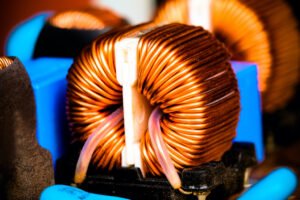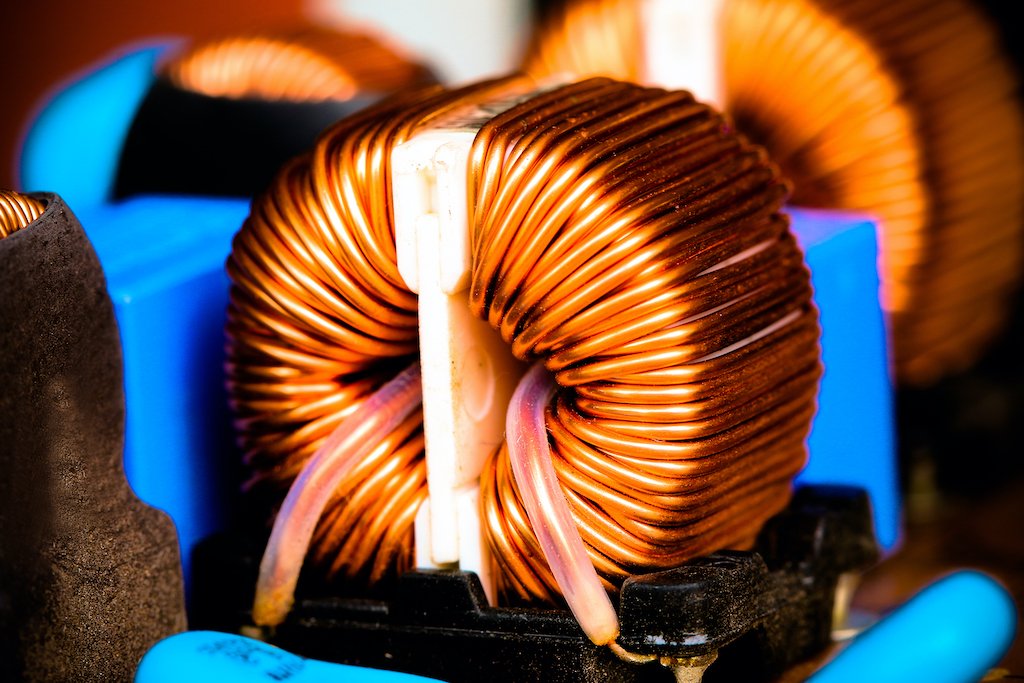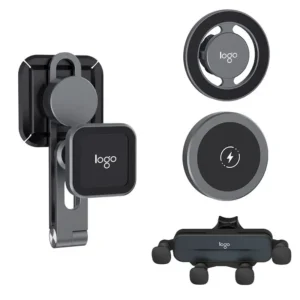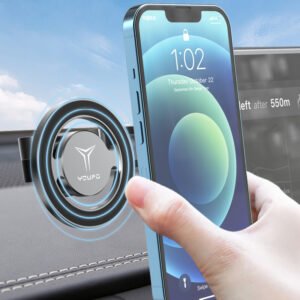Electromagnetic induction is the phenomenon where a change in the magnetic field within a conductor induces a flow of electric current in the same conductor, or in a nearby conductor. It can be understood by Faraday’s law of induction, which states that the voltage (emf) induced in a conductor is proportional to the rate of change of the magnetic field passing through it. This principle is the foundation of generators and transformers, which are widely used in power generation and distribution systems.
The development history of the principle of electromagnetic induction?

The principle of electromagnetic induction was discovered by Michael Faraday in 1831. Faraday was a British scientist who was investigating the relationship between magnetism and electricity. He found that when he moved a magnet inside a coil of wire, a current was induced in the wire. He then discovered that the direction of the induced current was related to the movement of the magnet, and could be changed by reversing the direction of the magnet’s movement.
Faraday’s discovery marked a turning point in the understanding of electricity and magnetism and was the foundation for the development of the theory of electromagnetism. His work was later expanded upon by James Clerk Maxwell, who used Faraday’s ideas to develop a set of equations that described the behavior of electric and magnetic fields.
Faraday’s discovery also had important practical applications. It led to the development of generators, which are used to produce electricity, and transformers, which are used to step up or step down voltage levels. These inventions have revolutionized the world and made possible the widespread use of electricity in homes, industry, and transportation.
What can the principle of electromagnetic induction be applied to?
The principle of electromagnetic induction has a wide range of applications in various fields, including:
- Power Generation: Electromagnetic induction is the basic principle behind the operation of electrical generators, which convert mechanical energy into electrical energy.
- Transformers: Transformers are devices that use electromagnetic induction to step up or step down voltage levels, making it possible to transmit electrical power over long distances.
- Motors: Many types of electric motors, including AC and DC motors, rely on the principle of electromagnetic induction to produce rotational motion.
- Alternating Current (AC) power systems: Electromagnetic induction is the basis for the generation and distribution of AC power, which is widely used in homes, industry, and transportation.
- Medical Equipment: Electromagnetic induction is used in medical equipment such as MRI machines, which generate images of the inside of the human body.
- Sensors: Electromagnetic induction is used in various types of sensors, such as position sensors, speed sensors, and current sensors.
- Eddy Current Testing: Electromagnetic induction is used in eddy current testing, a non-destructive testing method that is used to inspect metal parts for cracks and other defects.
The working principle of electromagnetic induction and wireless charging?
The working principle of electromagnetic induction is based on Faraday’s law, which states that a changing magnetic field generates an electromotive force (emf) in a nearby conductor. In the case of wireless charging, a charging pad generates a magnetic field through the use of an alternating current (AC) coil. This magnetic field is used to induce an emf in a coil within the device being charged, which is then rectified to produce a direct current (DC) that can be used to charge the device’s battery.
In wireless charging, the magnetic field is created using an AC coil in the charging pad and the voltage induced in the device’s coil is rectified to produce DC voltage. The energy transfer occurs through electromagnetic induction, where an alternating magnetic field in the charging pad induces a current in the coil in the device, producing a flow of electrical energy.
The two coils are positioned near each other, but not in direct contact. When the device is placed on the charging pad, the coils are aligned, allowing the magnetic field to pass through the air and induce an emf in the device’s coil. The amount of power that can be transmitted in this way is limited by the efficiency of the system and the distance between the coils, but it is a convenient and efficient way to charge a variety of devices.
How to understand QI wireless charging?
Qi is the world’s first standardization organization to promote wireless charging technology, with two main characteristics of convenience and versatility. First, products of different brands can be charged with Qi wireless chargers as long as they have a Qi logo. Second, it has overcome the technical bottleneck of wireless charging “universality”.
Understanding the basic principle of Qi wireless charging.
- Qi is based on the principle of electromagnetic induction for power transmission. The induction-coupled power transmission system consists of a transmitter coil L1 and a receiver coil L2, which together form an electromagnetically coupled inductor. The alternating current carried by the transmitter coil generates a magnetic field, which by induction causes the receiver coil to produce a voltage. This voltage can be used to power a mobile device or to charge a battery.
- The efficiency of the power transfer depends on the coupling between the inductors (k) and their quality (Q).
- The coupling is not only related to the distance between two inductors (z) and their relative size (D2 /D), but also to the shape of the coils and the angle between them.
- Qi wireless charging system consists of a base station and a mobile device. The base station contains one or more transmitters, which will provide the energy to be received.
- The mobile device contains a receiver to provide electrical power to the load (e.g., a battery), and the receiver will also provide information to the transmitter. The transmitter contains an energy conversion unit that converts electrical energy into a wireless energy signal, and an energy harvesting unit in the receiver converts the wireless energy signal into electrical energy.
- The receiver will deliver electrical energy to the load as needed, and the transmitter adapts energy delivery to the needs of the receiver.
Understanding the power consumption of wireless charging.
An important factor affecting power consumption is charging efficiency.
1, Qi’s wireless charger has the same components as a wired charger (AC to DC power adapter along with charging electronics) but replaces the copper wire between the power adapter and the phone with a wireless connection. The wireless connection is nowhere near as efficient as a copper wire, but with careful design, the wireless connection can achieve at least 70% transfer efficiency.
2, another factor is the standby power consumption. Assuming these people keep the charger plugged in, the power consumption on standby is almost equal to the power consumption when the battery is charged. And Qi has dramatically reduced standby power and demonstrated a system that consumes only 0.0001 watts (100 microwatts) in standby.
Here are the estimates from Qi’s official website.
In general, if you replace two wired chargers with one wireless charger, the wireless charger is comparable in efficiency to the wired charger. Details of the relevant calculations are as follows.
Wired charger power consumption.
First, calculate the power consumption of a traditional cell phone charger. This type of charger is the so-called “external power adapter”. Some websites provide a lot of data. It can be found that, in general, AC to DC power adapters meet Energy Star standards.
- Efficiency at full load: The average efficiency of a 5-watt power adapter is 72%.
- Power consumption at no load: the average power consumption of a 5-watt power adapter is 0.12 watts
- Some particularly good power adapters consume as little as 0.01 watts.
Assume you use the power adapter for 1 hour a day and keep the power adapter plugged in for the rest of the day. When charging is complete, people usually do not unplug the power adapter and base from the power supply. Although this practice is not desirable, it is very common.
The resulting total power consumption is as follows.
- Charging: 1 hour * 2 watts/72% = 2.8-watt hours (assuming a 5-watt charger supplies an average of 2 watts during a full charge)
- Standby (no load): 23 hours * 0.12 watts = 2.8 watt-hours
As you can see, standby power consumption is a high percentage of the total power consumption of a phone charger.
- Our wireless charger also contains an AC to DC power adapter. Assume the same efficiency of 72% and the same standby power consumption of 0.12 watts. [Note: The standby power consumption of the wireless charger is much lower than 0.12 watts, so this is for comparison purposes only]. The typical transmission efficiency of a wireless charging connection is 70%. Let’s assume that using this wireless charger instead of 2 wired chargers, the total power consumption would be
- Charging: 1 hour * 4 watts / 72% / 70% = 7.9 watt hours (charging 2 devices simultaneously)
- Standby (no load): 23 hours * 0.12 watts = 2.8 watt-hours
Power consumption comparison between wireless charging and wired charging.
Total power consumption for two wired chargers: 2 * ( 2.8 + 2.8 ) = 11.2 watt-hours
Total power consumption of a wireless charger charging two devices: 7.9 + 2.8 = 10.7 watt-hours
This shows that the total power consumption of both is roughly equivalent. Although wireless transmission is clearly less efficient than copper wire transmission, wireless chargers can reduce standby power consumption when used in place of multiple external power adapters.
People mistakenly believe that 70% is the energy conversion efficiency of the Qi standard from home electricity to the device. In fact, 70% is only the efficiency of energy transfer between the transmitter and receiver and does not include the conversion efficiency of the AC-DC adapter. In fact, the overall efficiency Qi of 5V DC output from home power to battery is up to 45%, and traditional direct connection is 50% to 65%.
Quick Links:
🔗Detailed Tour of FEIYU Factory – Environment






